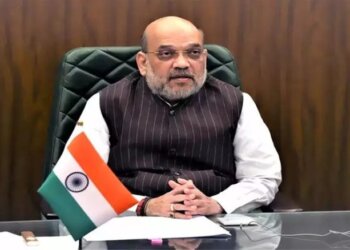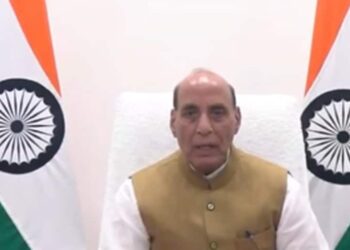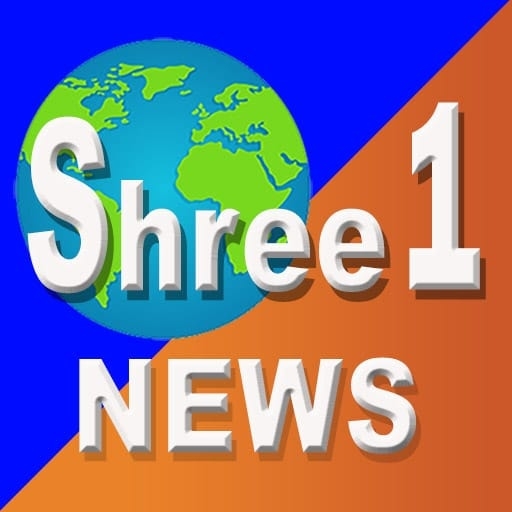As a group Captain Shubhanshu Shukla prepares to become the first Indian to travel to space in over 40 years. An 18-member team from the Indian Space Research Organisation (ISRO), led by chairman V Narayanan, has arrived at NASA’s Kennedy Space Center in Florida to witness the launch of the Axiom-4 mission, which has been postponed by one day due to weather conditions. It will now lift off on Wednesday at 5.30 p.m. India time.
Shukla is the selected pilot for the Axiom-4 mission, which will arrive at the International Space Station (ISS) after a 28-hour flight in space. The mission’s Crew Dragon spacecraft is planned to dock with the ISS about 10 p.m. India time on Thursday. The transfer of astronauts, from the spacecraft to the ISS, could take another couple of hours after the docking.
Shukla is the first Indian to go to the ISS, a permanent space laboratory, that has been orbiting the Earth for the last 25 years, and is constantly manned by astronauts. He is only the second Indian to go to space, more than 40 years after Rakesh Sharma went on a Soviet mission in 1984.
“We are all very excited right now. This is a very important mission for ISRO. This will increase our exposure and confidence for our own Gaganyaan (human spaceflight) mission,” Narayanan told media from Florida.
Shukla’s participation in the Axiom-4 mission has been made possible by an agreement between ISRO and NASA. NASA has authorized Axiom Space, a private US company, to fly crewed trips to the ISS as part of an attempt to encourage private sector engagement in space transportation to low-Earth orbits and the ISS. NASA permits the use of its infrastructure and training facilities for these missions.
Axiom-4 is transporting four astronauts who will spend two weeks on the ISS. Aside from Shukla, there is an astronaut from Poland and Hungary, both of which, like India, are returning to space travel after more than 40 years. This explains why the mission’s theme is ‘Realize the Return’. The fourth member, also the commander of the mission, is space travel veteran Peggy Whitson, who holds the record for spending the maximum number of days, 675, in space over multiple trips.
Shukla’s flight occurs months before the anticipated launch of the Gaganyaan mission, ISRO’s first attempt to conduct a crewed expedition to the Moon. Shukla had been chosen and trained for the Gaganyaan programme, along with three others. However, the Axiom-4 opportunity arose, allowing Shukla to travel ahead of his colleagues.
“So far, we only had the experience of Rakesh Sharma for space travel. At that time (1984), we did not have a human spaceflight of our own, but now we do. And Shukla’s experience would be very important for that. It is a great learning opportunity,” Narayanan said.
Shukla, referred to as Shux by his crew mates, will conduct seven experiments designed by ISRO for this mission. He will participate in several other international science experiments during his stay at ISS. From the space station, he will also interact with students, academia, people from the budding Indian space industry, and dignitaries.
Shukla, who is from Lucknow, has previously stated that he will embark on the journey on behalf of the 1.4 billion people. Science and Technology Minister Jitendra Singh, who also heads the Department of Space, said the entire country was looking forward to Shukla’s flight.
“While all four astronauts were trained for the country’s Gaganyaan mission, the offer for this collaboration (with Axiom) came during the Prime Minister’s visit to the Washington in 2023. What we learn during this mission will be important not only for the human spaceflight mission, but also for our planned Chandrayaan-4 and Bharatiya Antariksh Station missions,” Jitendra Singh told The Indian Express.
There are some key differences between the Axiom-4 mission and the spaceflight undertaken by Rakesh Sharma in 1984.
India now has its own human spaceflight mission in the works — the rocket has been human rated, the crew escape systems and parachutes have been tested in various conditions, the astronauts have completed their training. India’s first crewed mission is scheduled for 2027. And, the learnings from the Axiom-4 mission will feed into it.
“When Rakesh Sharma went to space in 1984, India did not even have a launch pad. The first launch pad came up in 1993 and the second in 2005. Now, we are already gearing up for our own human mission. India is now a partner and is at the forefront of research,” said Singh, adding that Shukla was the second most important person on the mission.
At the time, the country only had one launch vehicle, the now-retired SLV.
“During the current mission, the astronauts will also be docking with and undocking from the International Space Station, an experience that will be extremely important for our planned Chandrayaan-4 mission as well as the Bharatiya Antariksh Station, both of which will require multiple dockings and undockings,” Singh said.
He noted that India is also conducting cutting-edge research, including many life sciences and biomedical studies, which will benefit not only India but also other human spaceflight missions.
While Rakesh Sharma’s journey was part of the Soviet diplomatic programme Interkosmos, which aimed to assist its allies in spaceflight, the current mission is commercial. India has paid approximately Rs 50 crore to cover the expense of Shukla’s training, travel, and stay at ISS.
The first voyage to the ISS by Axiom Space, a private firm that intends to build its own space station, took place in April 2022. The second trip, in May 2023, featured the first female commander of a commercial spaceflight. And the third occurred in January 2024.
Source: IE

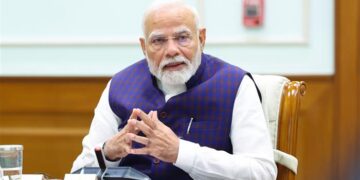
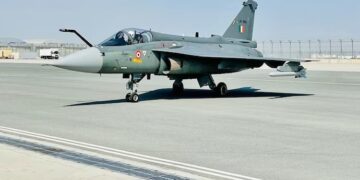

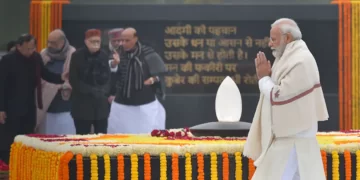

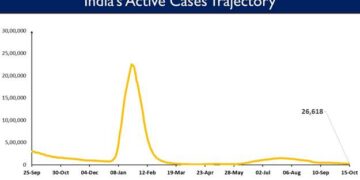
 Finance
Finance

